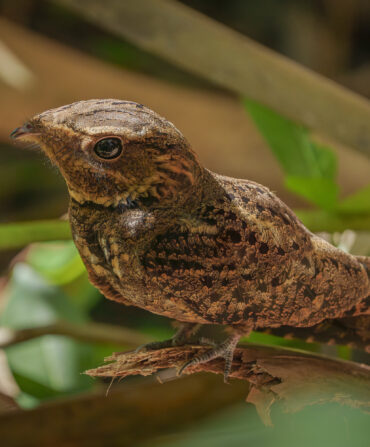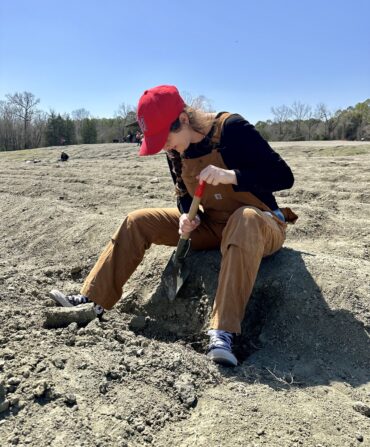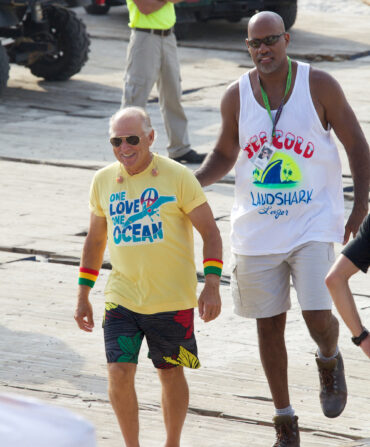Constrained by trigger and bolt and breech, the gun engraver’s canvas is hardly the size of a playing card. A few square inches with possibly another stamp-size space or two. That’s where she is asked to express the surprise flush of a pheasant, the quiver of a pointing dog’s flank, the thunder of an elephant scenting danger.
For Lisa Tomlin, that’s just enough. The fifty-two-year-old engraver, who lives on a former Virginia Blue Ridge horse farm, has quietly assumed the status of one of the country’s foremost artisans in a medium more closely associated with Europe and the custom studios of the great American arms manufacturers of the Northeast. She has no formal art training, no college degree. She has views of the Blue Ridge, a tiny hammer, a quiver of handmade chisels, and a jaw-dropping client list.
>BONUS PHOTOS: See more images from this story
Tomlin has engraved guns for General Norman Schwarzkopf, Dirty Harry director John Milius, and a who’s who of Safari Club International hunters. For General Chuck Yeager, she engraved the Bell X-1 airplane Yeager flew when he first broke the sound barrier, in 1947. When a custom gun maker was searching for an artist to embellish a one-of-a-kind 20-gauge custom side-by-side for President George H. W. Bush, the telephone rang in tiny Evington, Virginia, a dozen miles southwest of Lynchburg.
“Really,” a still-starstruck Tomlin says quietly, “it’s hard to imagine.”
What’s harder still: imagining that it all started at a flea market.
“As long as I can remember, I loved pencil drawing,” Tomlin says. Growing up in the suburban outskirts of Lynchburg, she took dogs and horses and cats and birds as her subjects; whatever struck her fancy, sitting in a quiet corner of her childhood home. “But animals,” she recalls, nearly crooning. “Always animals. That set the tone for what I would one day do for a living, but of course, who could have known?”

Photo: Stacey Van Berkel
Pencil impressions form a past engraving job.
At the age of twenty-three, Tomlin was married and had recently quit her job as a secretary to sell her sketches at craft shows and at a small space she rented at Lynchburg’s Fort Flea Market, where metal outbuildings shared a lot with a drive-in theater. “It wasn’t much, just a table, but at least I was indoors,” she says, a bit sheepishly. It was an inauspicious beginning. She sold paintings of horses and people’s cats. “There was a pet rooster,” she says, laughing. “Just anything, it didn’t matter. And I would feel bad for charging fifty dollars. Mostly, I was doing it for fun.”
That’s when a neighbor dropped by her booth and suggested she try her hand at engraving. Unbeknownst to Tomlin, one of the country’s finest production engravers worked just a few miles from her home. Ken Hurst, a onetime master engraver for the custom benches at Colt and Winchester, operated a shop of a half dozen engravers and produced hundreds of engraved firearms for fund-raising auctions for groups such as Ducks Unlimited, the National Wild Turkey Federation, and Safari Club International. Tomlin’s friend arranged a tour, and that was the proverbial that.
“We went down there the very next day, and on the spot, I knew that this is what I wanted to do,” she says. “I begged Ken Hurst for a job.” Within two weeks, Tomlin was at work, an apprentice engraver whose only prior exposure to the art form was leafing through a Beretta catalog a few years earlier. “It was a this-changes-everything moment,” Tomlin says.

Photo: Stacey Van Berkel
Drawing on a shotgun receiver before starting work.
Almost everything. Today, Tomlin’s work still involves those dogs and cats and birds, but they are English pointers and African lions and bobwhite quail. For nearly three decades Tomlin has been on an artistic whirlwind. She spent three years at Hurst’s shop, moving up from belt buckles to custom knives and guns. She hung out her own shingle in 1986. “Thankfully,” she marvels, “I have not looked for work since.”
Instead, customers look for her. Engraving is a peculiar sort of art, often a mix of collaboration, personal vision, and artistic taste. Some clients arrive with very specific ideas—they send her photographs of bird dogs, breathless descriptions of charging Cape buffalo and big cats on the prowl. For other projects, she is given a blank action and carte blanche. She has engraved everything from alligators to gazelles, songbirds to skyscrapers.

Photo: Stacey Van Berkel
Dogwood flowers on a personalized trigger guard.
“The fact that I was such a dedicated pencil drawer set me up for this,” she explains. “I was good at painting, but I never enjoyed working with colors as much as I like black-and-white imagery.”
No matter the primary subject, Tomlin injects her own style. The beauty and the mystery of the engraver’s art are somewhat elusive. It is revelation by reduction—by removing the superfluous, the engraver reveals the image hidden in metal. Tomlin is fluent with the English bouquet-and-scroll style of tiny flowers and tightly figured scrollwork common to many fine British shotguns. She still works in the banknote style followed by her mentor, Hurst, in which extremely fine lines are engraved so that the scene appears to have a photograph-like texture. But she has evolved a type of scrollwork that calls to mind the open tendrils and leaves and curling vines of the blackleaf style. “I like imagery that jumps out at you,” she says. “And American customers like big, bold contrast and depth that you can really see and feel. I think it sets off the vignettes, really pulls you into the scene.”
And it is with the vignettes and scenes that Tomlin makes her mark. There are elephants with ears pinned back in anger, Cape buffalo on alert, ruffed grouse and quail rendered in inlay, beating a retreat in gleaming gold relief. She can spend forty hours or more than four hundred hours on a single firearm. Adorning every available inch on a Parker might run $12,000 to $15,000. An over-the-top buttstock-to-muzzle job could top thirty grand. A client’s investment portfolio is the limit, but you don’t have to forgo retirement to afford a piece of Tomlin’s magic. Depending on the design, an ornately rendered monogram on a silver pistol grip cap might sneak in under $1,000 and set a firearm apart from every other.

Photo: Stacey Van Berkel
Steel Work
One of the many knives Tomlin has engraved.
For her clients, Tomlin says, “engraving is a way of showing their love of a particular rifle or shotgun. Even people who aren’t interested in guns or knives are enthralled by these embellishments, and the fact that they exist on an item like a rifle just adds to the intrigue.”
But for the artist, it’s simply an adult expression of a childhood fascination, and she never tires of its seeming simplicity.
“I enjoy every single day, doing this,” she says. “It really is pretty straightforward. A hammer, chisels, and a vise. I could engrave in a closet if I wanted to.”








